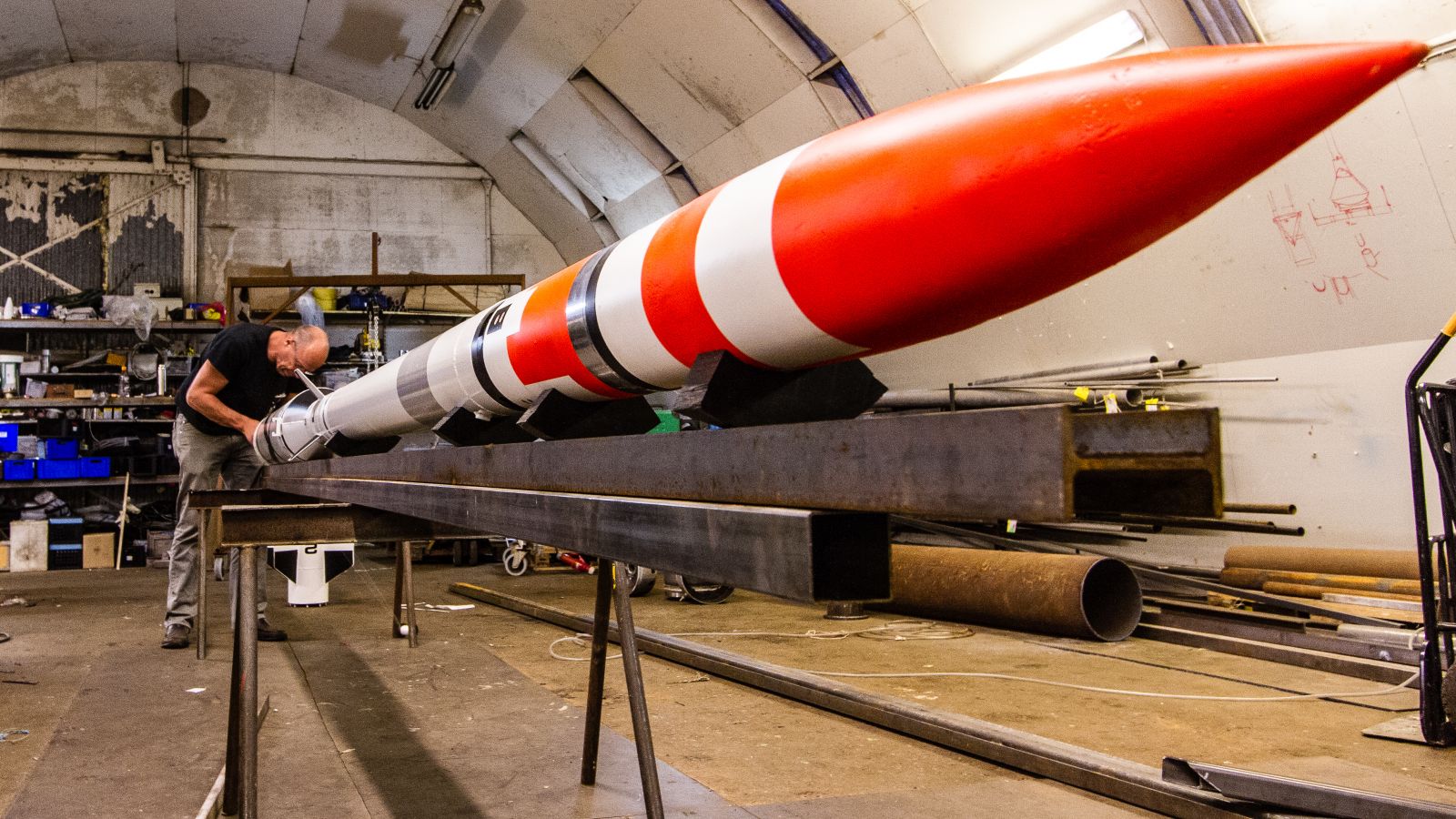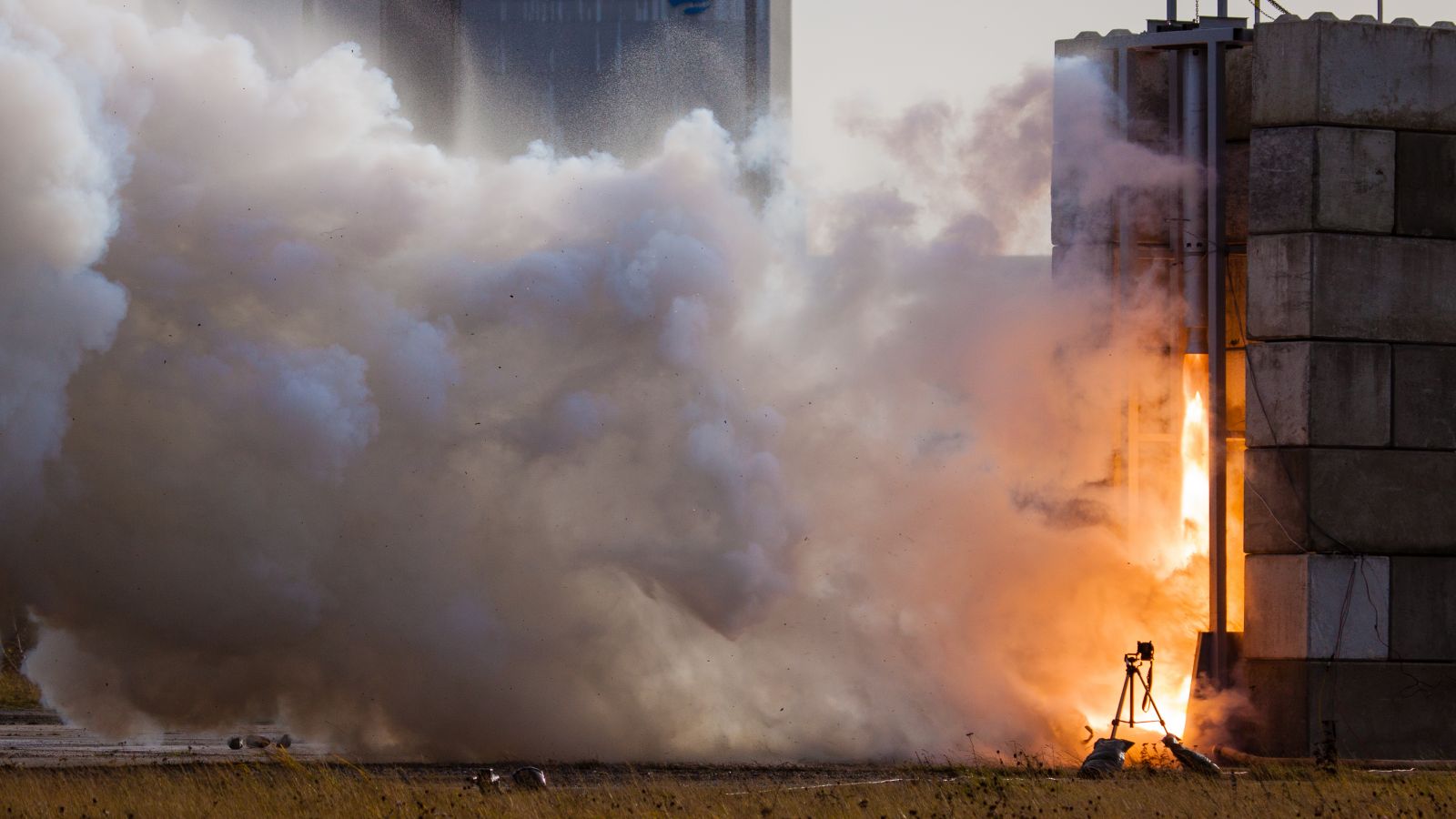Smaragd was an experimental, two stage hybrid rocket launched by Copenhagen Suborbitals on July 27th 2012. It was designed to fly to an altitude in excess of 20 km and test long range radio communication and GPS response. Within the first two seconds of flight the nosecone however detached from the vehicle and since all electronics where contained in the nosecone, almost no usable data was obtained. The vehicle however continued its flight and ignited the second stage as planned.

Vehicle specifications
The Smaragd rocket was the first two stage rocket built by CS. Both stages were propelled by hybrid rocket engines burning polyurethane oxidized by nitrous oxide. They both used the same valve-less hybrid rocket engine technology as seen on the Sapphire rocket.
The total length of the Smaragd rocket was 572 cm, the diameter of the first stage was 220 mm and the diameter of the second stage was 133 mm. Total lift off weight was 146 kg of which 47 kg was propellant (33 kg for first stage and 14 kg for second stage).
The payload module was equipped with an onboard sequencer for timing of flight events such as parachute deployment. It was equipped with a video camera and a video transmitter providing a live feed to mission control. Furthermore it carried a GPS unit and several sensors such as gyroscope, accelerometer and a barometric pressure sensor.

Static test and development
Both stages were test fired in a static test on November 26th, 2011. The stages are designed such that the first stage provides a large but short acceleration and the second stage provides a modest thrust such that the vehicle more or less maintains the speed acquired during the first stage burn. Thus the burn time of the two engines are 4 seconds for the first stage and 12 seconds for the second stage.

During the static test the first stage yielded a total impulse of 70 kNs and the second stage yielded a total impulse of 20 kNs
Launch
The Smaragd rocket was launched on July 27th 2012. At about 1.8 seconds after lift off the nose cone separated from the vehicle due to a mechanical design fault. The vehicle however continued its flight, the first stage burned for the planned 4 seconds, the vehicle then coasted for 12 seconds before the second stage was ignited (ignition occurred via a slow burning fuse also ignited at lift off). Due to the loss of the nose cone the parachutes were never deployed and both stages were lost to the ocean.
Dear Copenhagen Suborbitals guests
We'll get right to it: We need your help to run Copenhagen Suborbitals. This is a 100% non-profit project driven by sheer joy and hard work. We survive on donations averaging about $10, that we use to pay for raw materials, tools, our workshop, electricity and most importantly, rocket fuel. The entire CS team are unpaid volunteers, building rockets in our spare time. If this project brings you joy, please donate to keep it running. Thank you.
You can also donate via Paypal from our Support Us page


